ASUS at CES 2019: ProArt PA32UCX 4K Monitor with 1000-Zone FALD Unveiled
by Anton Shilov on January 11, 2019 5:00 PM EST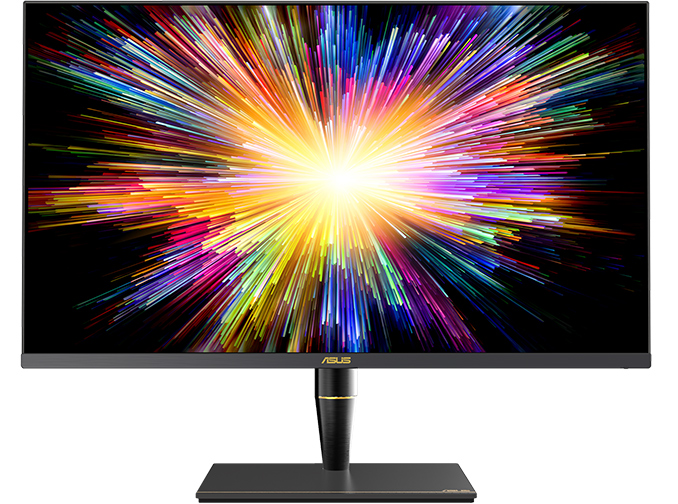
ASUS introduced its new flagship professional display at CES. The ProArt PA32UCX supports everything that one might expect from a 2019 professional monitor, including a 4K Ultra-HD resolution along with support of the DCI-P3 and Rec. 2020 color spaces as well as Thunderbolt 3 connectivity, but its key feature is a unique FALD backlighting with 1000 zones.
The ASUS ProArt PA32UCX monitor is based on a 10-bit 32-inch IPS panel that can reproduce 1.07 billion colors and features a 3840×2160 resolution presumably at 60 Hz. The custom panel is outfitted with an exclusive Mini LED-based backlighting that enables 1200 nits peak brightness as well as a 1000-zone full array local dimming (today’s leading-edge LCDs feature a 384-zone FALD) as well as 0.003 - 0.001 nits lowest luminance. To control the backlighting, ASUS had to order a custom display scaler and then test it for months to hit the right contrasts, color uniformity, and other targets it needed.
The manufacturer says that the ProArt PA32UCX display covers 97% of the DCI-P3 as well as 89% of the Rec. 2020 color spaces used for video post-production nowadays. Besides, it supports HDR10 as well as hybrid log gamma (HLG) HDR formats, but ASUS says nothing about Dolby Vision support. Since the monitor is only announced formally, ASUS does not disclose any details regarding its internal 3D LUT (look-up table) for HDR color gradations, but I would expect something very professional grade (e.g., 24-bit, which is more accurate than 14-bit). Meanwhile, ASUS says that the ProArt PA2UCX not only meets, but exceeds requirements for VESA’s DisplayHDR 1000 logo.
As far as connectivity is concerned, the monitor has one DisplayPort capable of DCI-4K with 4:4:4 chroma subsampling at 50/60 Hz, two Thunderbolt 3 ports capable of the same capability (and supporting daisy chaining), as well as an HDMI 2.0 input capable of DCI-4K with 4:2:2 at 50/60 Hz.
| Specifications of the ASUS ProArt Mini LED Display | |
| ProArt PA32UCX | |
| Panel | 32" IPS |
| Native Resolution | 3840 × 2160 |
| Maximum Refresh Rate | 60 Hz |
| Response Time | unknown |
| Brightness | 1200 cd/m² (peak) |
| Contrast | high |
| Viewing Angles | 178°/178° horizontal/vertical |
| HDR | HDR10, HLG |
| Backlighting | Mini-LED-based 1000-zone FALD |
| Pixel Pitch | 0.1845 mm² |
| Pixel Density | 138 ppi |
| Display Colors | 1.07 billion |
| Color Gamut Support | DCI-P3: 98% Adobe RGB: ? Rec. 2020: 80% sRGB: ? |
| Aspect Ratio | 16:9 |
| Stand | Hight, Tilt, and Swivel adjustable |
| Inputs | 1 × DisplayPort 2 × Thunderbolt 3 1 × HDMI 2.0 |
| USB Hub | ? |
| Launch Date | Spring 2019 |
ASUS plans to launch its ProArt PA2UCX officially this Spring, but the company does not specify when exactly. Meanwhile, it should be noted that it takes ASUS a long time to finalize its high-end monitors. Traditionally, the manufacturer does not pre-announce MSRP of the display, but since we are talking about a 32-inch LCD with a unique 1000-zone Mini LED-based FALD, it will cost thousands of dollars.
Related Reading:
- ASUS ProArt PA32U Display: 4K, 1000 Nits Brightness, 95% DCI-P3, 85% Rec. 2020
- ASUS Unveils ProArt PQ22UC OLED Monitor: 4K, 99% DCI-P3, 0.1 ms Response Time
- EIZO Announces ColorEdge Prominence CG3145: 4096x2160, 98% P3 and HDR10
Source: ASUS


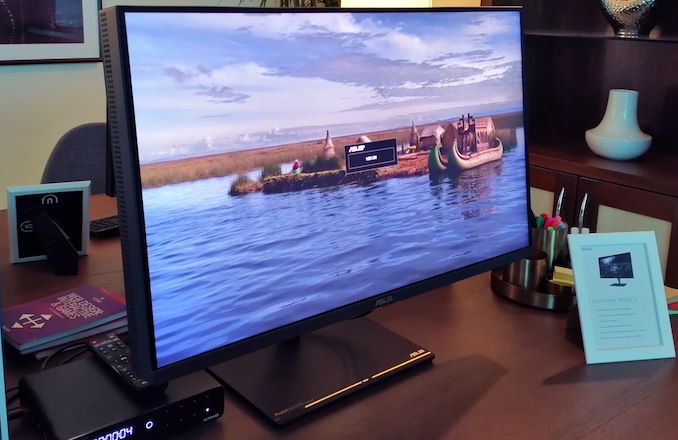
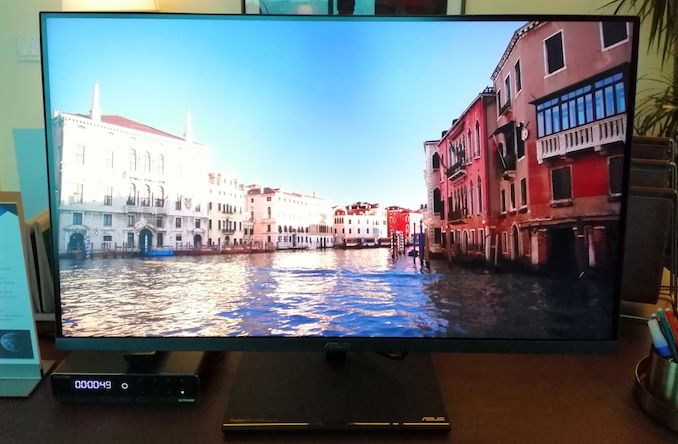

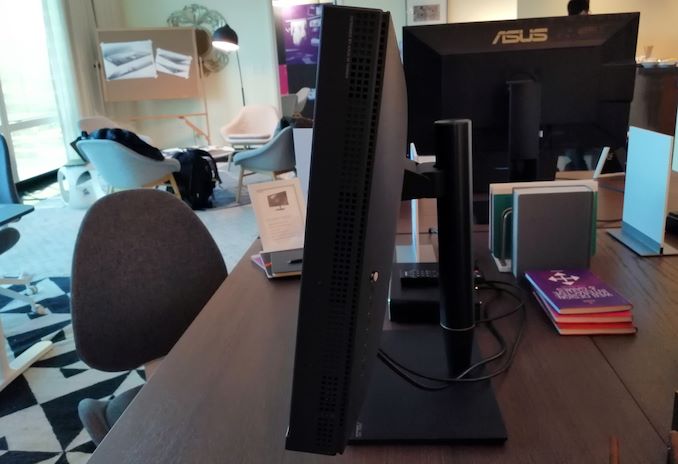
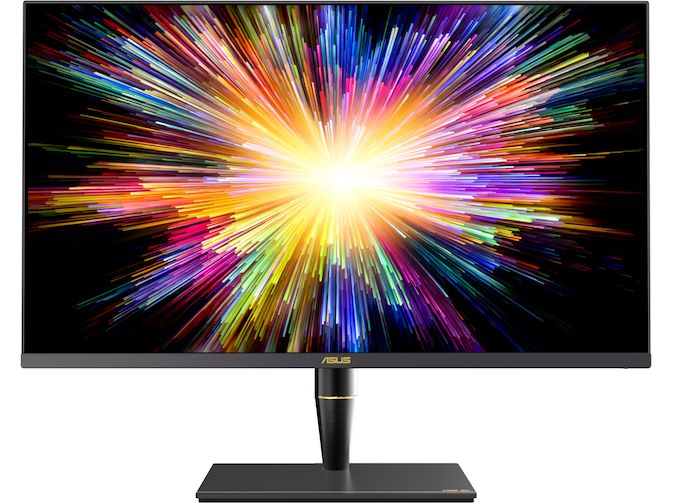








33 Comments
View All Comments
Valantar - Saturday, January 12, 2019 - link
What is the point of the inputs supporting DCI-4K when the panel is UHD? I can't imagine people who care about DCI-4K being willing to run a monitor in a non-native resolution, no matter how good it might be.bill44 - Saturday, January 12, 2019 - link
What ever happened to Panasonic's 1,000,000:1 contrast ratio IPS screen?"based around light-modulating cells permitting pixel-by-pixel control of backlight intensity in much the same way as OLED panels"
"According to Panasonic's internal testing, the panels treated with the additional layer of light modulating cells are capable of displaying a brightness of 1,000 candela per metre squared (cd/m²) and 0.001cd/m² simultaneously, without losing the viewing angles or colour gamut of the IPS panel."
As far as I know, Eizo is the only manufacturer using it. V.Expensive!
lilkwarrior - Saturday, January 12, 2019 - link
No HDMI 2.1? No Dolby Vision HDR and/or HDR10+? DOA.Valantar - Sunday, January 13, 2019 - link
What would it need HDMI 2.1 for? What would it need Dolby Vision or HDR10+ for? This is a professional display, not a home theater product.Lolimaster - Saturday, January 12, 2019 - link
Still a shitty IPS with poor contrast, IPS glow and washed out colors.RogerAndOut - Saturday, January 12, 2019 - link
Did you read any of the article before you posted? It is lit via 1000-zone full array local dimming, so it does not suffer from IPS glow from edge lighting. The local dimming will mean no poor contrast issues and it reportedly has 98% DCI-P3 support so colors will be just fine.Valantar - Sunday, January 13, 2019 - link
Washed-out colors? You don't know what color gamut means, then? 98% DCI-P3 and 80% Rec. 2020 means that this will be able to display ridiculously vibrant colors.As for contrast, we don't know the static number, but good IPS panels reach 1500-2000:1, which is decent (though good VA is obviously better). Coupled with 1000-zone FALD (that means ~8300 pixels per lighting zone, or roughly a 90*90 pixel grid (yeah, obviously the lighting zones will be circular), meaning around 2/3 of an inch). That is very small.
As for IPS glow, the degree of that varies a lot between panels, and good panels have nearly none. No reason to expect that from such a high-end panel.
Lastly, it's not like VA or OLED panels are free of visual artefacts...
Beaver M. - Monday, January 14, 2019 - link
Every IPS panel has IPS glow!Just depends on how close you are to it and at what angle youre looking at it.
Valantar - Monday, January 14, 2019 - link
That may be true, but the degree and visibility of IPS glow can vary significantly, and I've yet to come across a monitor where it's really problematic (then again I've never used a really cheap IPS to any extent).Beaver M. - Monday, January 14, 2019 - link
Then you should play more dark games. Its always a problem in those games.